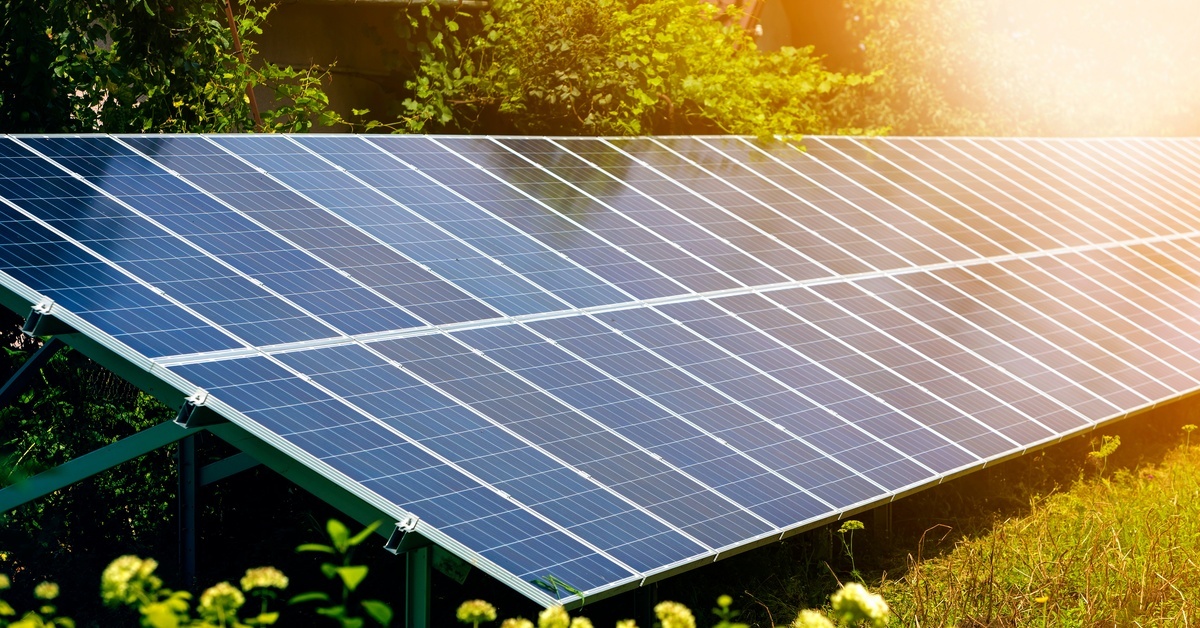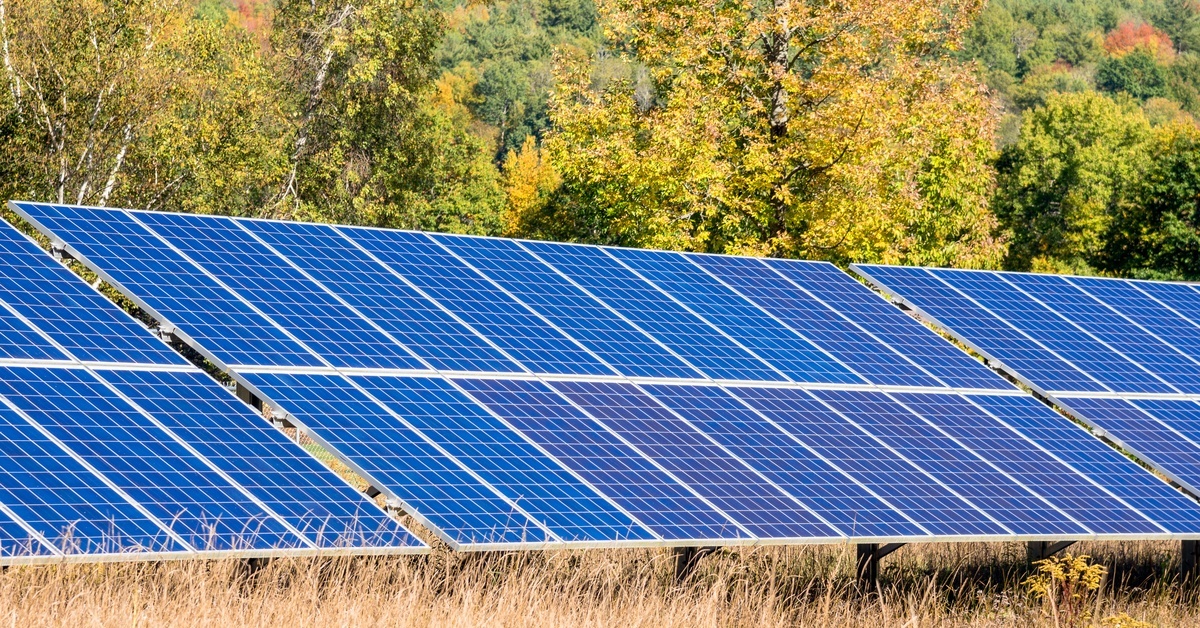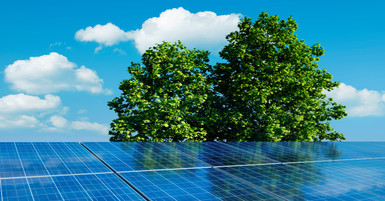Apr 15th 2025
Controlling Vegetation Around Solar Installations
Because solar systems sit underneath the bright sun, trees, shrubs, and other plants may grow and invade them. Whether you have a garden growing under your panels or overgrown trees surrounding your grid, controlling vegetation around your solar installations will prevent damage. Set a routine gardening schedule, and hire specialists to trim your greenery to improve your solar system’s performance.
Why Vegetation and Solar Farms Need Careful Management
Solar installations require unobstructed sunlight to function efficiently. Invasive vegetation around these systems can harm your system and the environment surrounding your solar farm. To avoid damage or costly repairs, discover what to expect if this overgrowth expands across your system.
Shade Around Solar Panels
A solar panel’s efficiency depends largely on the availability of sunlight. When plants such as tall trees or overgrown bushes block photovoltaic (PV) panels, the energy output decreases.
Even partial shade can impact the system’s ability to generate substantial energy. Rather than letting your system operate with diminished performance, routinely monitor for shaded areas that may disrupt energy production.
Physical Damage
Unchecked vegetation can cause physical damage to your installations. Overgrown tree branches can fall during adverse weather conditions and crack your panels. Also, low-growing shrubs or weeds can interfere with wiring or support structures, leading to costly repairs.
Structural vulnerabilities created by plants can add unnecessary strain to your investment. Stop this type of damage before it begins by removing loose branches and trimming overgrown greenery.
Fire Hazards
Dry vegetation surrounding solar farms poses a fire risk for your business. During warm seasons, dry shrubs or grasses can catch fire, creating a hazardous situation for the solar plant and surrounding communities. Addressing vegetation proactively reduces this risk and boosts the safety of your project.
Solar Label Obstructions
Aside from your solar panels and wiring, other components require unobstructed, easy access. Blocking your engraved solar labels, for instance, can make it difficult to identify key details when conducting maintenance or inspections. Consistent vegetation control allows access to all parts of your systems, from wiring to identification details.
Implementing Routine Pruning Measures

Pruning and maintaining the immediate surroundings of a solar farm can improve its operation and minimize potential issues. As you schedule routine repairs, be sure to make an appointment with a trained vegetation specialist to trim the greenery around your renewable energy project properly.
Identifying High-Risk Areas
The first step in routine pruning is identifying areas where vegetation poses the most concern. Aside from shaded areas, locate shrubs or plants growing close to the installation’s wiring, as these could intertwine with the mechanism and create hazardous conditions. Assign trained personnel or professionals to perform routine inspections to monitor problem spots.
Using Professional Equipment
Pruning trees, shrubs, and other plants around your installations can require specialized equipment depending on the size and density of the vegetation. Tools like chainsaws, pole pruners, and large mowers can expedite the trimming process for larger properties. If you need specialized or industrial equipment for your greenery, hiring professional vegetation management services is an effective solution for property owners who lack the resources for extensive pruning.
Scheduling Regular Maintenance
Vegetation growth is seasonal, which means you must conduct routine maintenance as part of yearly site management. Schedule pruning and trimming activities quarterly to keep overgrowth under control. Create timelines for these tasks that align with your region’s growth cycle for the best results.
Managing Ground Covers
Even if you install your solar farm away from forests and farmland, you could still face problems with overgrown greenery. While managing large vegetation like trees and tall shrubs will mitigate larger problems with your system, ground cover such as grasses and weeds also require attention. Controlling the vegetation around your solar installation includes preventing ground cover from growing around it.
Planting Low-Growth Species
Introducing low-growing plants like clover or maintenance-friendly grasses is an effective solution to mitigate regular weed growth. These plants reduce invasive growth and provide an eco-friendly way to retain soil moisture. Spruce up your solar grid by selecting plants that require minimal tending and will contribute to a simple upkeep schedule.
Applying Safe Weed Management Techniques
To control the spread of invasive plants, consider chemical-free weed management techniques. Hand weeding near areas like wires and panel bases can prevent accidental damage. For broader spaces, mulching or applying natural herbicides is a way to clear the area without compromising nearby ecosystems.
Monitoring and Preventing Spread
Once weeds are under control, consistent monitoring, trimming, and tending will keep them in check. Tend to these areas during scheduled maintenance along with larger trees and shrubs. These preventative measures will save your system from costly repairs.
Environmental Benefits of Responsible Vegetation Control

Taking a proactive approach to managing greenery around solar installations benefits your system’s operations and the environment surrounding your commercial business. By implementing a structured pruning and weeding routine, you’ll contribute to green initiatives set in place by local regulations.
Promoting Biodiversity
Clearing areas around panels allows space for planting native or pollinator-friendly species. This contributes to local biodiversity and allows insects and wildlife to thrive. If you’re looking to grow a beautiful field that won’t harm your solar system, introducing wildflowers or native grasses is a great way to promote biodiversity.
Preventing Soil Erosion
After your initial solar installation, cleared areas often suffer from soil erosion due to reduced plant life. Implementing vegetation management strategies such as establishing beneficial ground covers retains soil integrity. Prevent erosion, and maintain the land’s health for future projects on your commercial property.
Supporting Carbon Sequestration
Promoting selected greenery instead of eliminating vegetation entirely boosts carbon sequestration. This is an easy way to reduce carbon emissions alongside your solar panels and other renewable energy projects. By encouraging plants that absorb carbon levels, solar farm owners can amplify their contribution to fighting climate change.
If you notice changes in your solar grid’s performance, check for shaded areas or tall trees blocking your solar panels. Remove obstructions to improve your business’s solar efficiency. For additional resources and information regarding your solar installations, get in touch with our team at Get Solar Labels today!

